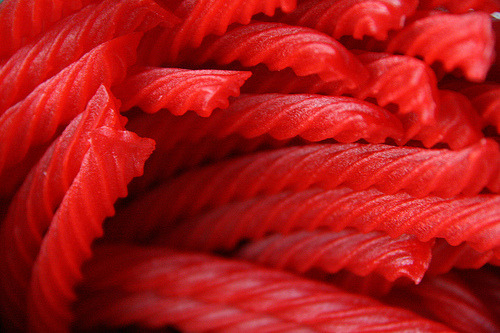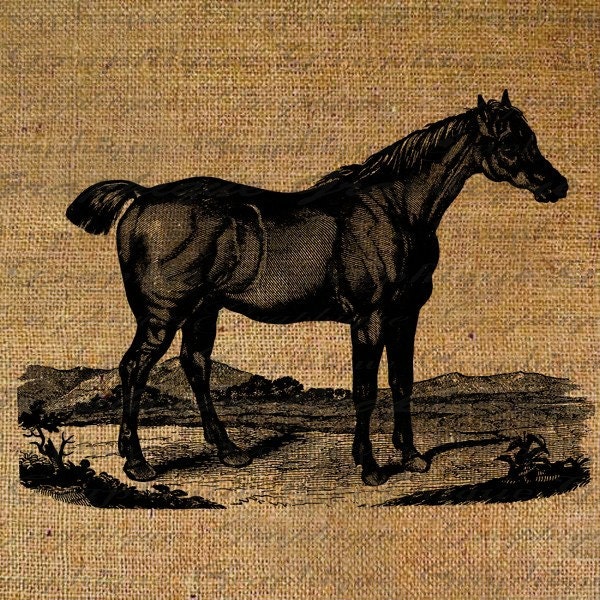Daily Apple reader Maximilian wants to know about licorice. This question was posted somewhere on his facebook wall or on mine, but I don't remember where exactly, and the dang things aren't searchable -- at least, not in any way that is at all reliable or usable (thanks a lot, Zuckerberg). So I have no recollection of the context for the question, or what specifically about licorice Maximilian wanted to know. Which means I'm going to take the scattershot approach and hope, in covering as wide an area as possible, I hit the target.
Because there are a LOT of things to know about licorice. There's the plant itself, there's black licorice, and then there's red licorice. I'll take each of those things in turn.

Will the real licorice please stand up?
(Photo from Door County Confectionery)





Licorice root extract. People take it for any number of medicinal reasons. If you try it, please use it in moderation.
(Photo from Drugstore.com)



Liquorice root on top of licorice candy. Which is probably aniseseed candy.
(Photo from Annmarie Gianni Skin Care)


Hey, look at this. You can get a 5-pound bag of red "licorice" Scottie dogs for about $30. They sell black licorice Scottie dogs, too.
(Photo and Scottie dog candy from CandyWarehouse)
For the record, I like black licorice AND red so-called licorice. I am not licorice-racist.
Sources
Kew Royal Botanical Gardens, Glycyrrhyzia glabra (liquorice)
USDA NRCS Plants database, Glycyrrhyzia glabra
University of Maryland Medical Center, Licorice
Medline Plus, Licorice
KSL.com, Cigarettes: Some things you probably didn't know were in there (including licorice), September 11, 2012
Licorice International, About Licorice
SF Gate, Dangers of Black Licorice, date unknown
Boston Globe, What's the difference between red and black licorice, besides color? August 29, 2011
Livestrong.com, Black Licorice vs. Red Licorice
Eating Real Food, What's in a Twizzler?
Because there are a LOT of things to know about licorice. There's the plant itself, there's black licorice, and then there's red licorice. I'll take each of those things in turn.
Will the real licorice please stand up?
(Photo from Door County Confectionery)
Liquorice Plant
- I'm choosing to spell the name of the plant with a q, mostly to distinguish the plant from the candy licorice. You can spell it either way in any context; this is just a distinction I'm making for the purposes of this entry.
- The liquorice plant has been known and loved for centuries, by civilizations around the globe. The Chinese loved it, the ancient Greeks loved it, the ancient Egyptians loved it. There's even some in King Tut's tomb.
- It's a legume (like a bean) that grows in open scrublands, near ditches or streams. In the US, it grows in California, Nevada, and Utah.
- Outside the US, it grows in places which can be hard to do business with: Afghanistan, the People’s Republic of China, Pakistan, Iraq, Azerbaijan, Turkmenistan, Uzbekistan and Turkey (M&F Worldwide's 10-K/Annual Report).
- The Latin name of the plant looks like someone sneezed while typing it: Glycyrrhyzia glabra.
- But if you break that word down, it makes sense. Glyc- reminds you of glucose, yes? That's because it means "sweet." And -rrhyz should remind you of "rhyzome" because it means "root." So the Latin word means "sweetroot."
- In fact the sweetroot compounds (glycyrrhyzin) that collect in the roots of the plant, and which are used for flavorings, are about 50 times sweeter than sugar.
Glycyrrhyzia glabra, or liquorice the plant. Looks like a pretty ordinary shrub, doesn't it? This one is growing in Bremen, Germany.
Liquorice the plant gets these clumps of pods that contain seeds. Kind of like what you see on a sumac bush.
(Photo from Wikimedia)
Liquorice root, cut and dried. This is where all the glycyrrhyzin compounds are concentrated, and it's the roots that are the source of liquorice extract.
(Photo from Health Mad)
Hunks of liquorice root that will get ground down further to form a powder which can then be made into capsules or made into a liquid extract or even an herbal tea.
(Photo from Wikipedia)
Medicinal uses
- I'll get to the flavorings aspect in a bit. But first I want to talk about the medicinal uses of the liquorice plant. Because they are many and varied and kind of surprising.
- To be clear, eating licorice the candy probably won't affect you in these ways. You would need to get some type of botanical liquorice the plant extract.
Licorice root extract. People take it for any number of medicinal reasons. If you try it, please use it in moderation.
(Photo from Drugstore.com)
- Ulcer treatment -- evidence is mixed on this, but suggests generally favorable results. Or at least, it might help reduce the pain associated with ulcers.
- Cough suppressant -- liquorice is a bronchial dilator, which means it opens the tissue in your lungs, allowing you to breathe more freely and cough less often.
- Expectorant -- loosens mucus to make its removal easier during coughing. Another reason liquorice was often used as cough medicine.
- Stomach acid reducer -- I don't know how well liquorice compares to the purple pill, but some people apparently report some benefit.
- Reduces inflammation -- mainly in the gastric land, so it could be helpful in treating heartburn or indigestion.
- Laxative -- the extent of the effect seems to vary quite a bit depending on the dosage and the person.
- Fat burner -- some reports say that liquorice may help reduce either the amount of body fat, or the thickness of body fat. However, the dosage necessary to see results here also resulted in much higher water retention.
- Depression -- here, reports are very mixed. Some say it helps combat depression, others say too much liquorice brings on or worsens depression.
- Which leads me to the other side of liquorice as a medicinal treatment, which is that too much of it can cause problems, such as:
- Increased blood pressure
- Increased heart rate
- Increased water retention
- Reduced potassium, which can result in irregular heart rate
- Muscle weakness
- In pregnant women, lots of liquorice can result in early births or miscarriage.
In Tobacco
- One little point here. Most tobacco products (cigarettes, pipe tobacco, roll-your-own tobacco, chewing tobacco, and maybe even some cigars) contain liquorice. Not much, maybe only about 1% to 4%, but it's in there.
- Some people say it's added for the flavoring and that it helps the tobacco stay moist (one of your favorite words, Maximilian).
- Other people who I think are closer to the mark say the real reason is because of liquorice's bronchial dilation properties. It helps open up the lung tissue so you'll be less likely to cough, get a bigger hit of the nicotine, and want more tobacco more often.

Here is one extreme example. This is chewing tobacco -- "smokeless tobacco pellets" -- flavored strongly with licorice. (Or, I'll bet they actually used anise to get the licorice flavor.) One tin will set you back £4.55, or about $7.
Black Licorice
Black licorice. Usually flavored, not with liquorice, but with anise. Same is true for black jellybeans, black Jujyfruits, Good 'n' Plentys, licorice ice cream -- anything supposed to taste like licorice is probably actually flavored with anise.
(Photo of Australian black licorice from Heini's)
- When liquorice the plant is used as a flavoring, it tastes a lot like black licorice the candy.
- However, most black licorice today is made using anise seed or even fennel, both of which have flavors similar to liquorice the plant. This is because they are cheaper and easier to come by than actual liquorice.
- Anise grows pretty easily in lots of places in the US, around the Mediterranean, in Asia. In short, you don't have to fight anybody to get anise, while you might have to do so to get liquorice.
- Sometimes black licorice also contains molasses as a way to get the candy to have the color we expect of black licorice.
- The first time licorice (black, of course) was made and sold as a candy was in Holland in the 17th century. It's been a favorite in Holland and the Netherlands ever since. Even though now, their licorice, too, is probably flavored with anise rather than actual liquorice.
- While the absence of liquorice in black licorice candy may be disappointing to some purists, the good news is that we don't have to worry too much about possible liquorice-related health risks when we eat black licorice candy. Because there's probably zero liquorice in it.
- Most candy manufacturers will use the spelling of the word to indicate whether it's got actual liquorice, as I have:
- Liquorice = contains actual liquorice-the-plant extract
- Licorice = contains mostly or all anise oil, and no or very little liquorice-the-plant extract
- However, not everybody follows this convention. If you really need to be certain about the absence of liquorice in your black licorice candy pipes, check the ingredients.
Liquorice root on top of licorice candy. Which is probably aniseseed candy.
(Photo from Annmarie Gianni Skin Care)
Red Licorice

Red licorice. Or more accurately, red corn syrup & flavoring.
(Photo from kmonse's Tumblr page)
- For my money, red licorice should be called something altogether different because it never has contained any liquorice extract, nor does it contain anything attempting to approximate a licorice flavor.
- It's pretty much all corn syrup, colored red, plus some sweeteners to make it taste like cherry or strawberry or whatever the heck other flavor you want.
- Nothing to do with actual licorice at all, except to mimic its texture.
- So for those of you who say, "I like red licorice, but I hate black licorice," what you're really saying is, "I hate licorice, but I love corn syrup."
- Both red & black licorice also contain wheat flour, used as a binder to hold everything together. So licorice is NOT gluten-free.
Hey, look at this. You can get a 5-pound bag of red "licorice" Scottie dogs for about $30. They sell black licorice Scottie dogs, too.
(Photo and Scottie dog candy from CandyWarehouse)
For the record, I like black licorice AND red so-called licorice. I am not licorice-racist.
Sources
Kew Royal Botanical Gardens, Glycyrrhyzia glabra (liquorice)
USDA NRCS Plants database, Glycyrrhyzia glabra
University of Maryland Medical Center, Licorice
Medline Plus, Licorice
KSL.com, Cigarettes: Some things you probably didn't know were in there (including licorice), September 11, 2012
Licorice International, About Licorice
SF Gate, Dangers of Black Licorice, date unknown
Boston Globe, What's the difference between red and black licorice, besides color? August 29, 2011
Livestrong.com, Black Licorice vs. Red Licorice
Eating Real Food, What's in a Twizzler?


